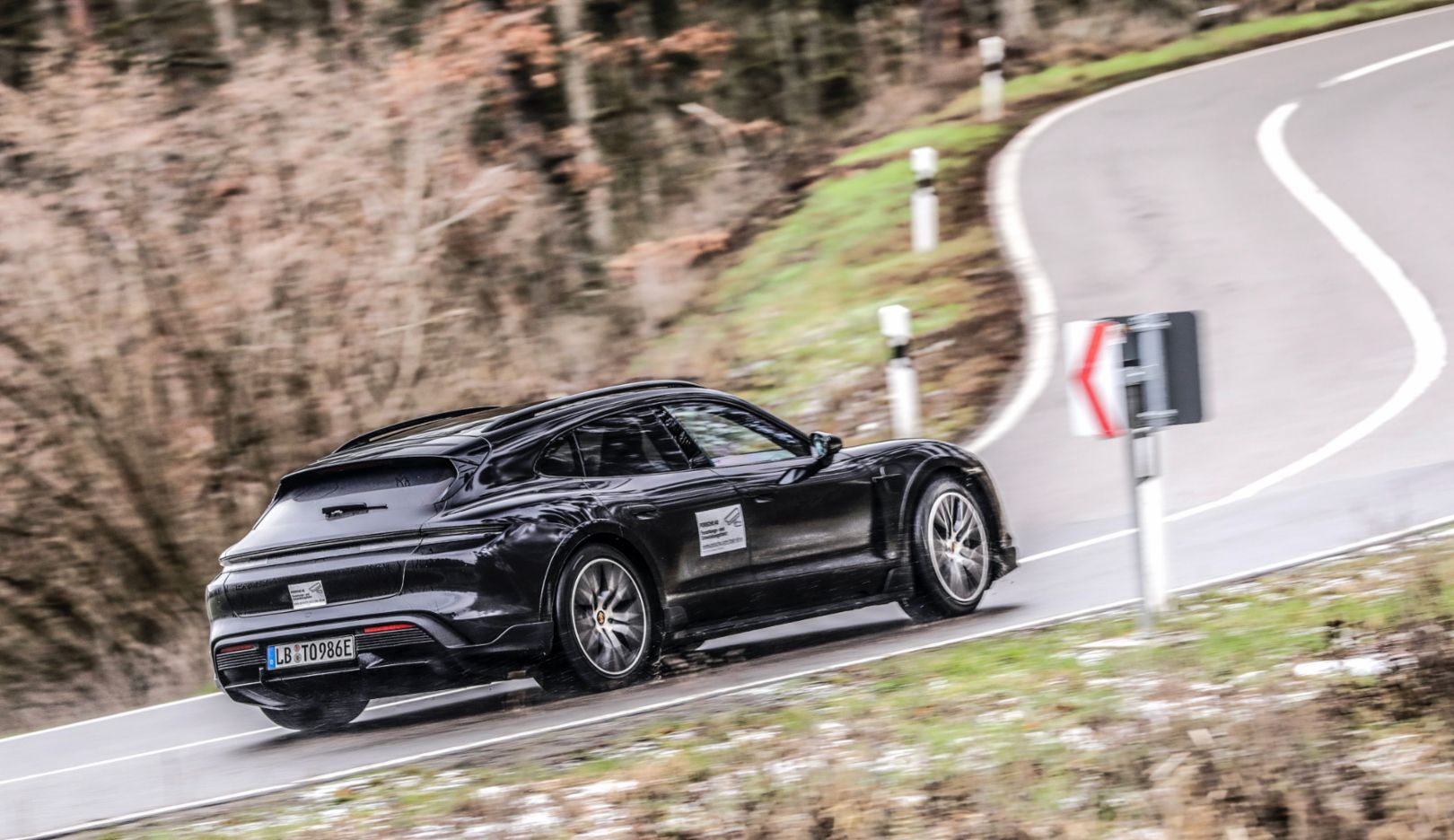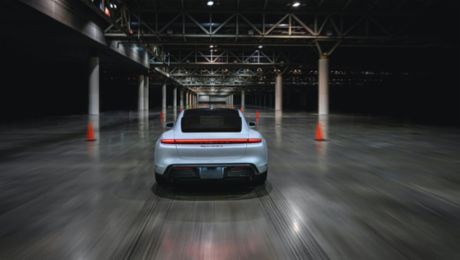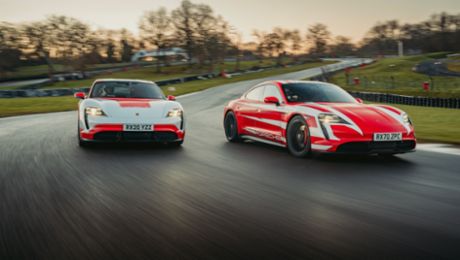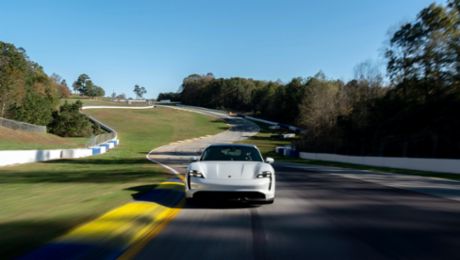On a chilly winter’s day on the empty rural roads east of Weissach, the head of the Taycan model line, Stefan Weckbach, is putting a very special new car through its paces. A lightly camouflaged Taycan Cross Turismo cuts an unfamiliar figure against the frozen farmland and snow-covered forests that fringe this popular test route, its long roofline and increased ride height last seen on the Mission E Cross Turismo Concept back in 2018.
Weckbach, dressed warmly against the freezing February temperatures, climbs aboard the all-black development car and heads out onto empty asphalt. Immediately there’s a familiarity to the way he talks and drives that suggests many hundreds of kilometres have already been shared between man and machine on these well-trodden local roads.
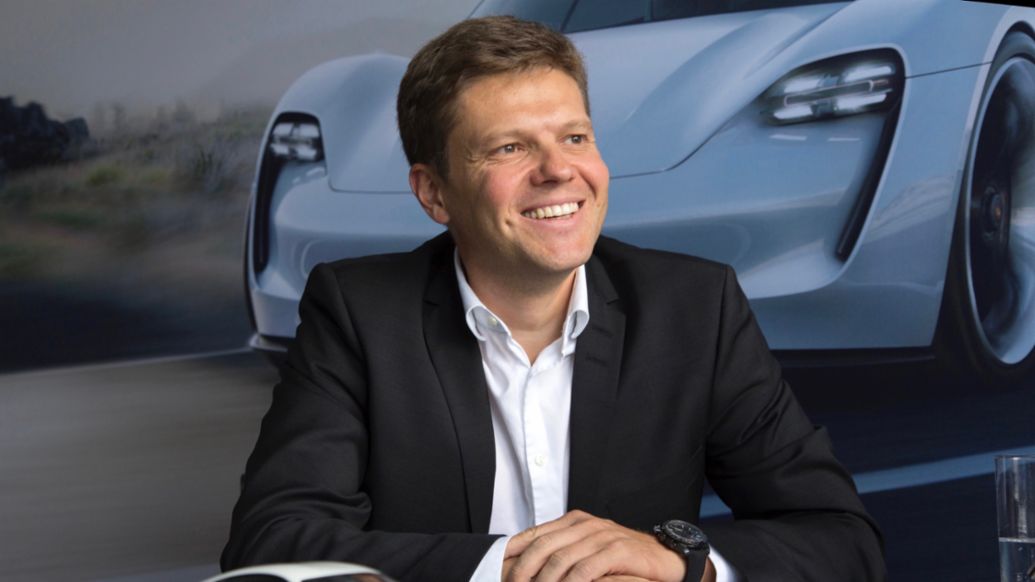
“With the Taycan Cross Turismo, we wanted to offer a little bit more space, a little more flexibility and versatility,” he says from behind the wheel. “We developed a completely new roofline, fitted with roof rails, a more generous second row and bigger trunk, all to make a car that is perfect for an active lifestyle. A car that is perfect for both an urban environment and the countryside.”
The Cross Turismo glides around sweeping bends as its commander in chief talks freely about what has, up until now, been a closely guarded secret beyond the walls of Weissach and the Taycan production line in Zuffenhausen. “In order to enable it to handle light off-roading and gravel roads,” Weckbach continues, “we increased the ground clearance. And we optimised our suspension system so the Cross Turismo comes with a CUV (cross utility vehicle) specific driving mode. This makes sure it does well on gravel roads in terms of stability, performance, and dynamics.”
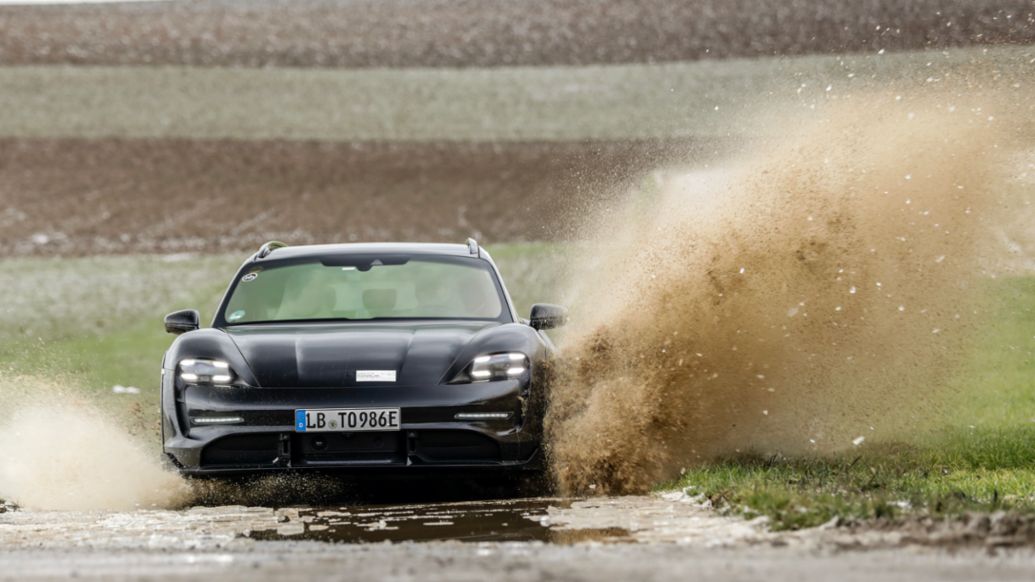
The Taycan has already enjoyed a remarkable beginning, with more than 20,000 units delivered worldwide in its first full year of production. Now, the appeal of Porsche’s first all-electric sports saloon is set to grow still further, reaching a new set of customers who want to take their low-impact lifestyle off the beaten track.
